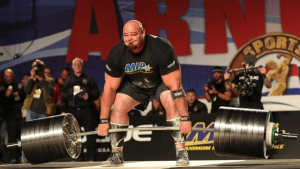(Last Updated on September 12, 2025 by Henry)
How To Deadlift With A Barbell –
How to Place Your Hands on the Barbell for a Deadlift
4 Different Styles
- Double Overhand
- Mixed Grip
- Hook Grip
- Lifting Straps
Should You Use Weight Lifting Straps for Deadlifts?
Depends On Your Level of Expertise, Goals & Condition
How Wide Should Your Grip Be on the Barbell?
Focus On a Few Details
If you use too wide grip, it simply increases the distance you have to pull the barbell. So, if your grip gets wider, technically, it makes the lift a little bit less efficient. You don’t exactly see a lot of guys who can deadlift with a snatch grip way more weight than they do with a narrower grip. Focus on these main details & you’re good to go:
- How you grip the bar – Double overhand / Mixed grip / Hook grip / Straps
- The width you are using to grip the bar with
- Not forcing your knees to cave in
- Not causing excessive friction between arms & thighs
Once you’ve got both of your feet in place – Your stance width & your toe angle, you’re ready to set up your grip. It’s simple & straightforward – Take the narrowest grip you can. It’s a great starting position, & your grip width is excellent when your arms are brushing against your thighs; meanwhile, they’re not forcing your knees or grinding against your thighs.
How to Grip the Barbell for a Sumo Deadlift
the Exact Same Way
All the barbell gripping styles & the information about them – Double overhand, mixed grip, hook grip, double overhand with lifting straps – apply to the sumo style deadlift the same way as they apply to the conventional style deadlift.
There’s likely only one big difference & it’s your knees’ position – Your knees won’t be in the way of your arms when you’re lifting sumo style. This also means you can take a narrower grip on the barbell.
You can grip the barbell with your hands directly below your shoulder & this position allows your arms to be potentially at their longest & helps to minimize the distance you need to pull the bar to make life more efficient.
If you’re comfortable with grabbing the smooth part of the barbell, you can do that to shorten the distance & make your life more effective. If not, you should widen your grip just enough so your hands are on the start of the barbell knurling.
Best Grip Techniques for Deadlifting With a Barbell
Common Mistakes
Once you set your grip, the barbell sits deep into your palms, it’s going to be pulled down by itself & straight into your fingers.
You’re going to tear up your hands without actually achieving a firmer grip!
The correct position is to set the barbell either above or below the calluses at the base of your fingers.
Pull the slack out of the barbell as you’re starting to lift & feel how your grip tightens properly.
This is the most effective way to achieve the strongest grip.
Eventually, as weights get heavier, you’ll end up getting biceps tears. There’s always a higher risk of tearing your biceps when doing that. You should not pull the bar with your arms at all.
Your back, hips, legs & grip should do all the work. Biceps tears almost always happen to the supinated/underhand arm when someone is pulling the bar.
Crush the bar with your grip, use all the power you have in your forearms, BUT leave your upper arms relaxed.
Remember, you are deadlifting, not rowing OR biceps curling!
Always grip the barbell harder than you need – The lift will feel easier if you grip hard enough – It’s already a psychological victory & helps you conquer the lift more easily. It creates much more confidence in you & having an upper hand is never a bad thing.
Thanks for Stopping By
Have Questions?
Please Leave A Comment


